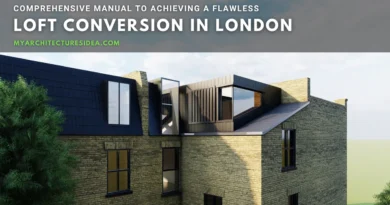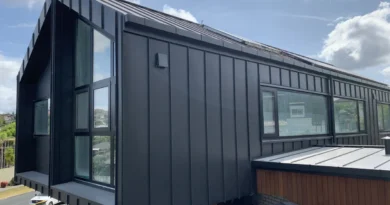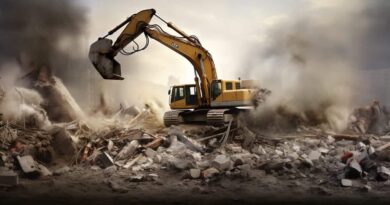Modular Home Build Stages: An In-Depth Journey into the Construction Process
As we know that building a home is a cooperative endeavor that involves working with several professionals and following particular procedures. Right?🤓
When considering modular residences, the building process isn’t solely about bricks and mortar; instead, it represents a carefully planned effort that run in phases to finally bring out the result of a dream home. 🏚️
In this article, I will be sharing the detailed stages of constructing a modular home, touching on the procedures involved in the process.
Building Systems Approach
Before I get into the individual stages, it’s important to understand the overarching approach – Building Systems. Modular homes are constructed systematically, with clearly defined processes, procedures and quality control methods.
This approach guarantees an efficient production process that complies with both national and state building codes, all the while fulfilling the high-quality standards expected by homeowners.🏫🏫
A stringent quality control framework supports the complete construction procedure, with experienced inspectors and supervisors supervising each phase. The objective is to identify potential concerns at an early stage, averting any serious problems and ensuring a smooth construction experience.
Stage 1: Floors – The Foundation of Your Home
The construction of a modular home begins with the foundation – the floors. These are built on precise templates known as jigs, ensuring exact measurements and conformity to standards.
Double-banded at the perimeter for extra strength, the floors consist of 2” x 10” wood members spaced and fastened at 16” at the center. Sturdy 3/4” tongue and groove OSB make up the floor decking, contributing to a solid foundation for the entire structure.
If you’re unsure what layout suits your needs, you can learn more here about some of the most popular floorplans for modular homes.😇😇
Stage 2: Walls – The Skeleton Takes Shape
Walls, often referred to as the skeleton of a home, are simultaneously fabricated with the floors. Exterior walls use 2” x 6” studs, while interior walls use 2” x 4” studs.
Drywall is affixed to the studs with a special foam seal adhesive, ensuring a flawless finish with fewer imperfections. 😍
The strategic fastening of walls to the floor system guarantees a robust and tightly built structure.
Stage 3: Roof/Ceiling Systems – Engineering Complexity
The modular roof system is a complex stage in the construction process. Engineered with a fold-up, self-supporting rafter system, roofs are built adjacent to floor and wall stations.
Sub-assembly stations play a crucial role in the efficient installation of roofs, reducing on-site construction time. Beams may be incorporated for heavy load areas and the entire structure is lifted, carried and securely fastened.🙃🙃
Stage 4: Plumbing and Water Systems – Essential Connections
Regardless of whether your home relies on public utilities or private well and septic system, plumbing is a vital aspect. Water supply lines, waste lines and venting stacks are installed as per the selected plan.
Plumbing connections are pressure tested to ensure against leakage. While water supply lines and waste lines are installed in the production facility, on-site connection by the builder is necessary for second-story lines.
Stage 5: Rough Electricals – Inside Out Wiring
Modular homes are wired from the inside out, a departure from traditional stick building. Pre-wired in the production facility following NEC guidelines, electrical components are installed and connected.
The electrical panel is attached for later installation on-site. Electricians connect wiring from all modular units upon delivery.
Stage 6: Drywall Finishing – Polishing the Interiors
This stage focuses on finishing interior walls. Drywall is meticulously installed and joint compound is applied to seams.
Special sheetrock and cement boards are used in moisture-prone areas. Corner bead ensures clean wall corners and if specified in the floor plan, a fireplace is installed.😌
Stage 7: Insulation and Sheathing – Energy Efficiency Unveiled
Energy efficiency takes center stage as R-21 batt wall insulation and blown cellulose ceiling insulation are installed. Exterior sheathing with OSB and caulking provide an additional layer of protection, ensuring a robust and energy-efficient home.🏡
Stage 8: Exterior Doors and Windows – Guarding Against Infiltration
The proper installation of exterior house wrap, doors and windows plays a vital role in averting the infiltration of air and water.
A polypropylene barrier for air infiltration is employed and doors and windows are affixed, glued and leveled into their designated positions.
Different exterior treatments, such as vinyl siding are then added based on your personal preferences.😉
Stage 9: Siding – Aesthetic Appeal with Functionality
Vinyl siding, a standard feature in modular homes, is properly installed for aesthetic appeal and functionality.
Proper measurements, leveling and affixing with a nailing flange ensure a secure fit. Low-maintenance ventilated vinyl soffit and aluminum fascia are added, with options for additional exterior treatments.
Stage 10: Finished Roof – Completing the Shelter
The roof is finalized with OSB sheathing, drip edging, ice and water shield, synthetic felt paper and shingles. Each component contributes to a weather-resistant and durable roof structure.
Stage 11: Trim, Doors, Paint – Adding the Finishing Touches
As the home approaches completion, final finish trim, doors and paint will be applied. Base trims, window trims and casings are installed and walls are sanded for a polished look.
Stage 12: Cabinets – Kitchen and Bathroom Precision
Pre-assembled cabinets in kitchen and bathroom areas provide functional and aesthetic advantages. The countertops are prepared for installation to complete the overall look.
Step 13: Electric Fittings – Bringing Light
Electrical outlets, switches, covers, phone jacks and coaxial cables are set up. Overhead lighting fixtures are linked to junction boxes and the range hood and other appliances are incorporated.
Stage 14: Plumbing – Bringing Water to Life
The final details of kitchen and bath plumbing come together, with sinks installed and faucets connected to supply and drain lines.
Stage 15: Touch-up and Cleaning – A Pristine Finish
The home is ready for a thorough cleaning, from dusting to window washing. Final details, including shelving installation are completed.
Stage 16: Wrapping and Loading – Ready for the Journey Home😇
With production complete, the modular units will be ready to be shipped to your plot. A weather-resistant membrane should be used to protect the units during travel, ensuring they arrive in pristine condition for final assembly.
Envision Your Dream Home Today
Constructing a modular residence is an exciting procedure that integrates accuracy, efficiency and skilled workmanship. Understanding the complexities of every phase enables homeowners to value the process from acquisition of basic materials to the completion of their ideal home.
While undertaking the venture of constructing your modular home, one thing that can help you through the process is to keep visualizing the final structure of what you are building as your dream place of abode.
I have shared the best of the best knowledge so far and hope you have really enjoyed my blog here!! Let me know what next you would like to read!! 🙃🙃
Also Read:
- The Versatility of Metal Buildings: Beyond Warehouses and Garages
- Exterior Makeover: Modern Landscape Design Ideas for Any Property
- Choosing the Right Home Furniture: Tips for a Stylish Living Space
- Storage Solutions for Every Budget: Finding Affordable Self-Storage Options
- Hardie Boys’ Soffit lightning guide




